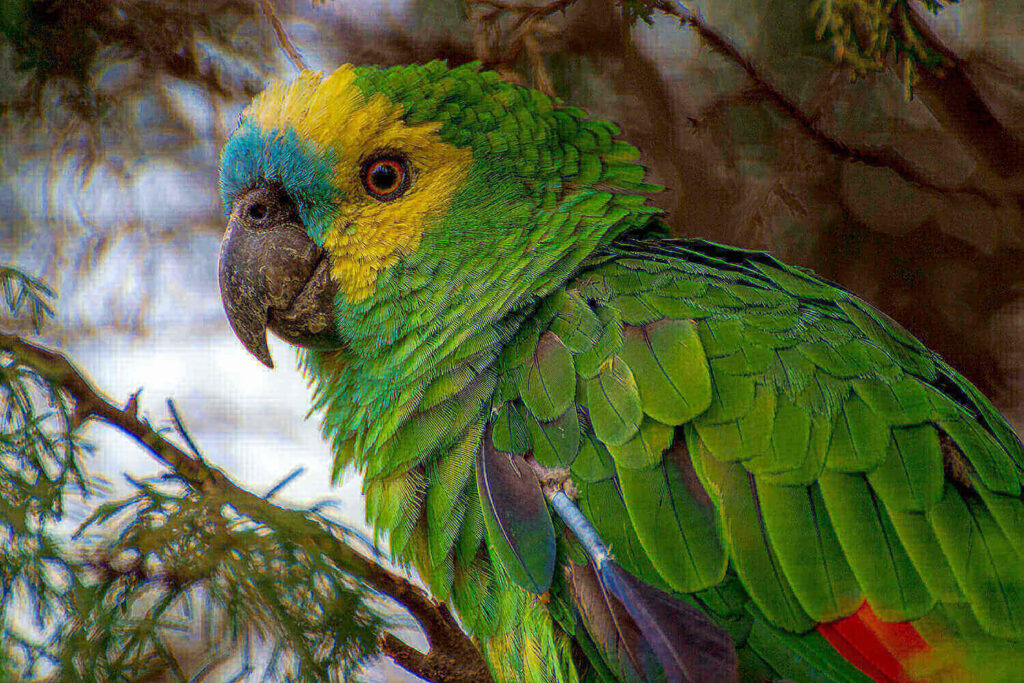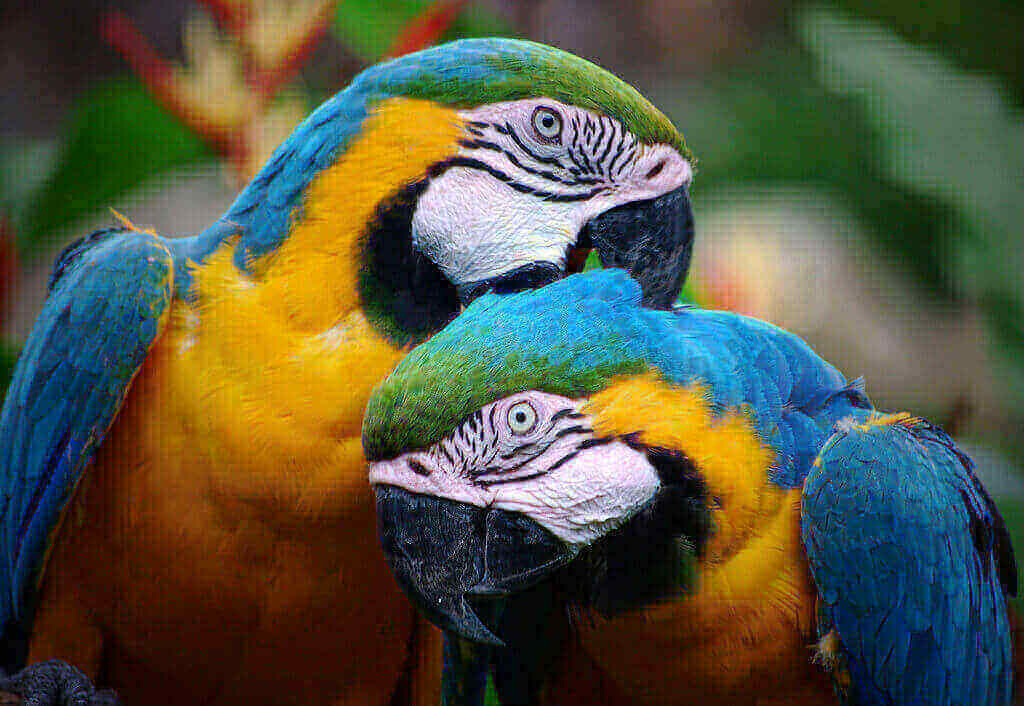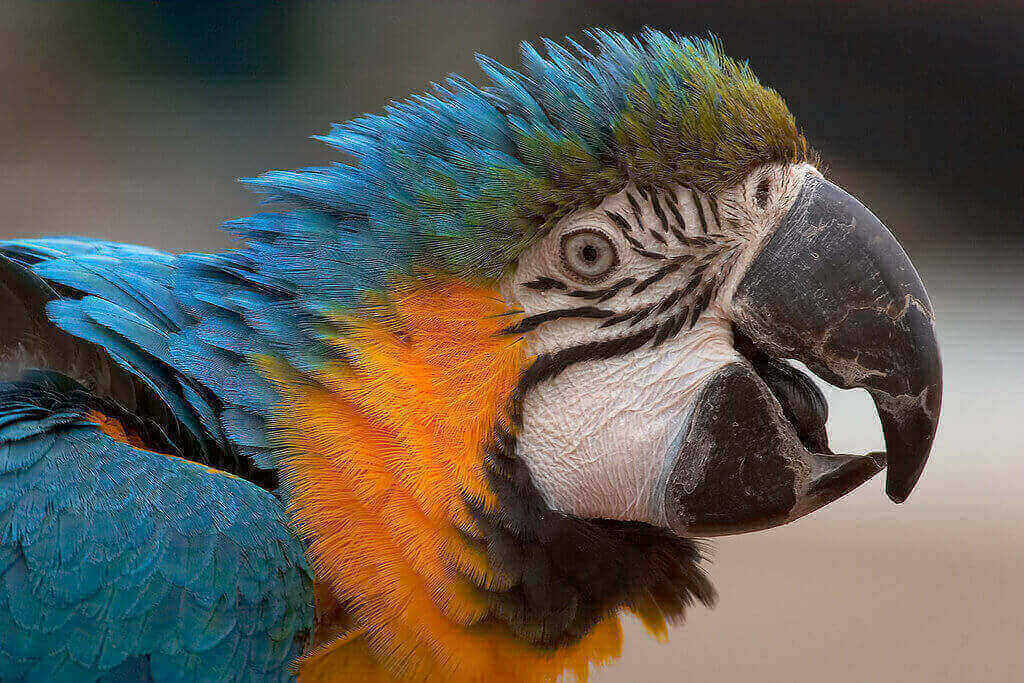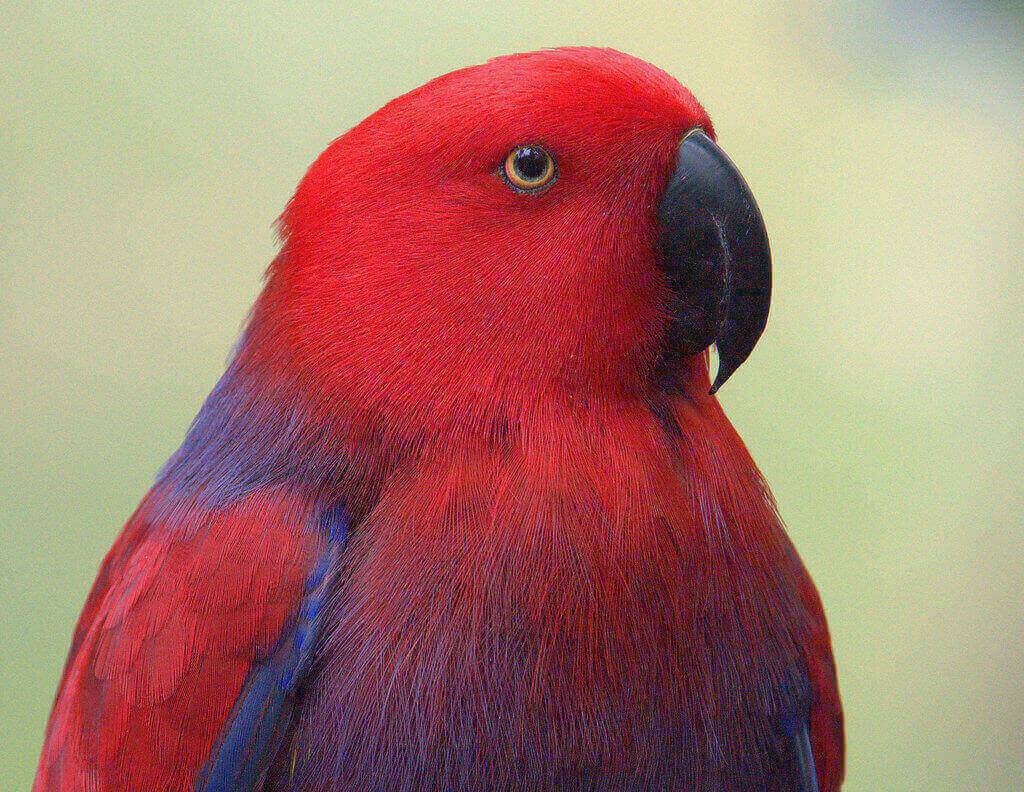You have a feathered friend that you adore very much, and as time goes on, you might start to worry if it will ever learn to talk to you. In the next paragraphs, we will talk about the subject at hand.
The time depends on the bird’s personality, your affinity with it, and how well you train it. It takes weeks to a year to generate words.
What influences a bird’s speech?

There are many details to think about. Some examples are given here:
Gender
Male birds tend to sing and call more often than their female counterparts. This occurs because in the wild they engage in courtship rituals in order to entice potential mates. Because of the need to guard territory and themselves against other birds and predators, they must also use their voices.
However, this rule is frequently broken. If you’re willing to put in the time and effort, female cockatiels and budgies can be taught to talk.
Personality
Similar to how some people are more reserved than others, some parrots are more extroverted than others. Depending on the individual, teaching a bird to talk may or may not be possible. It’s possible that some birds are too timid or disinterested in language to make any effort to learn it.
Some birds may go their entire lives without ever uttering a sound. You, the bird owner, must realize this and not let it be the deciding factor in whether or not you get a bird.
Species
Some bird species will have a more distinct voice than others, and this is important information to have. For example, an Amazon can be understood more easily than a Quaker parrot.
Bond
It takes a lot of work for a bird to talk like a human, as we covered in our Why can parrots talk article. In order to produce different sounds, parrots must move their tongues forward and back in their mouths.
They have to do something similar to burping from within their trachea in order to produce plosive sounds (such as “b” and “p”).
Bonded parrots believe their human owner is part of their flock and stubbornly sing our song.
A deep attachment with your bird is needed to teach it to talk.
Age
Younger birds learn to talk more easily, just like children do. Young birds learn quicker if assessed during the vital period.
Ravens can only learn to talk during their crucial phase when their neurological system is especially sensitive. If this organism doesn’t receive the right stimulus during this stage, it may be difficult to learn afterward.
Younger birds establish a greater attachment with their first family, which may impair their ability to talk. A close link facilitates learning because it’s hard for a parrot to learn to talk. It’s worth it when they’re trying to interact with their human flock.
New vocabulary acquisition slows down at a particular age.
It is possible that parrots, given enough time, can acquire the skills necessary to communicate.
Birds will learn what they wish to learn and will repeat sentences and noises for their own entertainment. It’s possible that you won’t even get a “vote” on what they decide to study.
Observe how much kids learn on their own without instruction; you might be surprised.
Before attempting to teach your bird to speak,
You shouldn’t get a talking bird simply because you want one, so that’s the first thing to keep in mind. Having a bird just to stroke your ego by saying you do is not the best reason to have a pet bird.
Parrots shouldn’t be cherished for their trick-performing abilities but rather for who they are as individuals. Everyone who wants a bird as a pet ought to realize that birds are loyal companions.
Unfortunately, not all birds can be taught.
Some parrots won’t talk, too. Maybe because they’re not interested or have a neurological or vocal impairment.
Is it acceptable if I say this again?
Think about whether or not you’ll mind your bird making the same noises over and over again before you start teaching it. Some owners may find hearing “Hello” multiple times a day to be too much, so keeping that in mind is important.
Instructions for talking with my parrot
Following is a collection of travel advice we’ve compiled:
Stay on topic while you speak.
Consider the experience of learning a new language. Vocabulary terms must be learned in the context of their use. The parrot’s mind works along the same lines of logic.
They will pick up on the noises that interest them if you repeat words while interacting with them directly.
When discussing or inquiring about the bird, it is important to keep the context of the words you use in mind.
Here’s an example:
Can I get you something to drink? (Indicate the ocean)
Don’t forget to use the word “water” any time a bird re-hydrates.
If you give them a bath, use the time to have a conversation with them about their day.
Would you like to take a bath? (Indicate the mist)
With enough practice in the right environment, they may start using those lines to achieve what they want from you. No definite time frame may be required.
You can also add some “drama” to the phrase or give it a meaningful context by associating it with something significant.
Repetition
The amount of focus you give your parrot is more important than anything else when it comes to teaching it to talk. Though it may seem dull at first, you’ll need to use the focus phrase multiple times daily. Minimum of two weeks, with at least one hour every day devoted to practice.

To put it simply, the greater the number, the better. Repeat this phrase whenever you are in close proximity to the parrot, such as when you are tending to its needs by cleaning its cage, feeding it, or touching it. at any available moment.
Slowly and consistently in the same tone, you should repeat the words.
Positive experience
When your bird repeats, give him attention or a cuddle.
Find the bird’s favorite snack, and give it to it whenever it makes an attempt to utter the word (be careful with the number of snacks given). One option is to wait for it to happen again before handing out the reward.
Clicker training
You can use the clicker to reward the parrot whenever it displays the desired behavior. More information about clicker training is available on the internet.
Take it easy and be steady.
You shouldn’t be trying to teach them anything too advanced, such as extended sentences or difficult vocabulary. If you want to zero in on one word, stick to it for a while.
Pick a family member to be the teacher.
There is some data that suggests the bird learns intonation more quickly when it is taught by a single human member of the family.
Allow them some time for rehearsal.
Before employing them in front of an audience, a parrot may practice using the new words and sounds in isolation. If they don’t feel confident in their abilities, they can be too shy to perform in front of you. Keep in mind that to them, you represent the flock. Someone adores you.
Give them a more fulfilling setting.
- Spend a lot of time talking to and petting your bird.
- Try to spend at least two to three hours a day interacting with it.
- Do a weekly toy swap.
- Keep some space open for the bird to fly away.
- Give it plenty to eat, clean water, and a roomy cage
To learn by using a model and its competitors
The model/rival technique was created by Irene Pepperberg. Student parrot. One trainer (model) delivers directions, and the other (rival) responds correctly and incorrectly. The rival must compete for the trainer’s attention. Model and trainer might swap roles.
When will my parrot learn its name?
Try to choose a two-syllable name for your parrot. Longer names are difficult to remember and say. Because parrots don’t have lips, “plosive” names are tougher for them to say. Parrot names include:
- Angel
- Lucky
- Mango
- Max
- Sam
- Buddy
- Rocky
- Polly
- Koko
- Kiwi
- Cookie
Mistakes to avoid when attempting to train a parrot to speak
- Avoid accidentally producing the wrong sound. Don’t reward your bird for repeating microwave noises, for example.
- Never discipline your bird for not obeying. Negative sanctions don’t work. They’ll stress and confuse your bird.
- No shouting. Birds perceive forceful tones well.
- It’s doubtful. Some say it happens, some don’t, and there’s no scientific evidence. Whistling before talking is apparently bad advice.
Parrots start talking when?
Training of smaller birds can begin at around the 3-6 month mark. The larger the parrot, the longer it may take to mature, anything from six months to a year.
A Course in Parrot Talking
Not all parrots learn to talk, despite common beliefs. They’re always talking, but it takes time and work to turn it into human speech. Even when they’re young, they need daily exposure to human voices.
A noisy household can motivate a parrot to generate his own bustling background noise, which isn’t always pleasant. If your household noise is mostly quiet conversations, you may have a talking bird.
Some species talk more than others. The family’s natural mimics will mimic human speech. African Greys, several Amazons (particularly the Double Yellow-headed and Yellow-naped), Eclectus Parrots, and Indian Ring-necked Parakeets are larger species. Blue-and-gold Macaws and Bare-eyed and Rose-breasted Cockatoos chatter the most.
Budgies and Lories are the chattiest tiny parrots (for the former, see our separate Omlet Budgerigar Guide for more information). Cockatiels need to be raised, but they don’t speak much. Most species can be taught, but many have unclear voices.
Parrots are naturally vocal and gregarious, so you may teach them phrases right immediately.
Primitive Instructions for Communicating with Parrots
Early on in the learning process, you’ll use select phrases like “Nero is a nice boy!” to reinforce desired behaviors. It is the words that are said with passion and drama that leave the most profound effect. Think of yourself as talking to a baby; it’s the kind of tone that works. Parroting the words will ultimately get you somewhere.

Once the bird understands what you’re saying, he’ll be glued to you like a hawk. Some owners run into difficulty because their parrots learn their favorite insults and expletives and use them with remarkable precision.
The active lives of parrots necessitate a wide range of vocalizations. All of these are social in nature, such as greetings, arguments, requests for attention, cries of wrath, etc., and it is easier to train a bird to talk if the sound is accompanied by interaction.
Suggestions for Getting Your Parrot to Speak
Try these to free the bird’s tongue:
- Talk as you place food or water in a cage. Hello as you approach the cage or enclosure. Always say farewell when leaving the room or the bird.
- Say these sentences when approaching the parrot. Parrots are interested in sounds and will watch you speak.

- Try to catch the parrot when he’s most attentive, such as in the morning or shortly before feeding time.
- Repeat simple words or phrases for 2-5 minutes. Repeat throughout the day.
- Each day, schedule many short lessons.
- If you say “I adore food! While you’re stacking trays, your parrot will make the connection. When you refill his bowl, he may say, “I adore eating!” When you do something, make the chosen sounds. It will take months, but you’ll bond with the parrot.
- Naming fruits and veggies work too. Hold out a carrot, banana, etc., and say its name. If he’s receptive to teaching, the parrot will learn the word for each food.
- When you say ‘carrot,’ he will know what you mean; if he says the word, attempt to offer the food as a reward (without overdoing any specific meal – a savvy parrot will soon learn that uttering the magic phrase creates his favorite treat!)
- Feeling-filled words last. This is why a parrot’s vocabulary includes cuss words and phrases like “Wow,” “Stop,” and “Ouch.” This isn’t a cue to yell at your bird, but it’s worth noting (as a word of warning).
- Encourage desired phrases with treats and excitement, and discourage unwanted ones by not replying or answering with a desired word.
Helpful Hints for Shy People
- “Association” learning has alternatives. Set your bird on a solo perch and repeat your chosen sentence. Reward a responding parrot.
- Higher-pitched words and phrases seem to interest parrots. Birds learn best from female voices.
- Choose a one-syllable word (like “hello”) or the initial syllable of a lengthier word if your parrot is still confused by the background noise. If your parrot’s name is Nero, for instance, you should call it “Neer” until he learns the whole name.
- In order to successfully hand-train a parrot, it is important to keep the bird close to your face while you speak so that it can see and hear the words well.
- Engage a human. Your friend should say “Hello” when you do. This shows the parrot how to respond. Most talking parrots take this joyfully and greet everyone who walks in.
- Treat any improvement, but not if the parrot hasn’t spoken.
- If the parrot is unfamiliar with human voices (e.g., in a room with other birds but no constant human companionship), use a radio, TV, or music player to familiarise him with them.
FAQs
Q: How long does it generally take for a bird to learn to speak?
A: The duration varies greatly depending on the bird's personality, the bond it shares with its owner, and the effectiveness of the training. It can take anywhere from a few weeks to a year
Q: What factors influence a bird’s ability to speak?
A: Factors that affect a bird's ability to speak include its gender, personality, species, bond with the owner, and age. For instance, male birds sing more often, and younger birds learn more quickly.
Q: Can female birds be taught to speak?
A: Yes, with patience and effort, female birds such as cockatiels and budgies can be taught to speak, despite males typically being more vocal.
Q: Are certain bird species better at speaking than others?
A: Yes, some species have more distinct voices than others. For example, an Amazon parrot's speech can be understood more quickly than a Quaker parrot's.



